Although humans started making art (cave paintings, figurines, etc.) to depict the world around them over 40,000 years ago, writing did not emerge until much later in human history. These early cave paintings turned into pictographs, which then turned into proto-writing systems.
The civilizations in and around Mesopotamia are credited with inventing the first true writing systems in the world. Several clay tablets from this time period have survived and this list contains the oldest confirmed writings.
There are numerous claims that older tablets such as the Tărtăria tablets contain the oldest writing, but researchers aren’t even sure that the markings on these tablets even represent an organized writing system.
7. Palermo Stone
Year Written: Unknown – believed to be no later than c.2300 BCE
Location: Unknown – currently at Regional Archeological Museum Antonio Salinas in Palermo, Italy
Writing System: Egyptian hieroglyphs
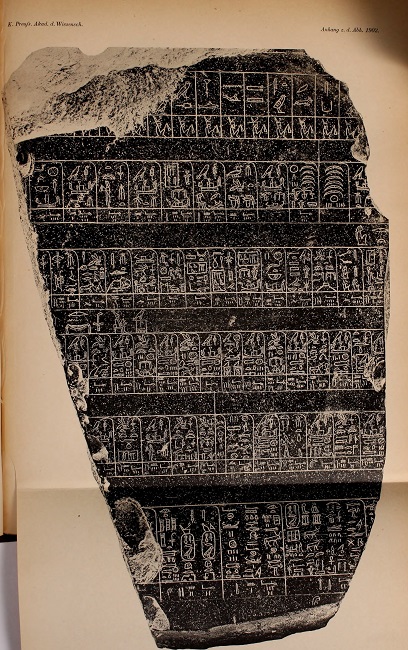 photo source: Wikimedia Commons
photo source: Wikimedia Commons
The Palermo Stone is an important Egyptian artifact that contains information pertaining to the first five dynasties of Egypt (c.3150 – c.2323 BCE). Not much is known about the Palermo Stone’s origins — no one knows where it was originally found or when it was written.
In 1859, Ferdinand Guidano purchased the Palermo Stone and his family later gifted it to the Palermo Archaeological Museum in 1877.
No one is certain of the age of the Palermo Stone, but most researchers believe that it was written no later than the last entry about the Fifth Dynasty, which ended around 2300 BCE. Despite the lack of information over the Palermo Stone’s history, it has been a vital source for the history of Egypt’s Old Kingdom and is the only record of several royal family members.
6. The Reforms of Urukagina
Year Written: c.2500 – 2340 BCE
Location: Girsu (modern-day Tell Telloh, Iraq)
Writing System: Cuneiform
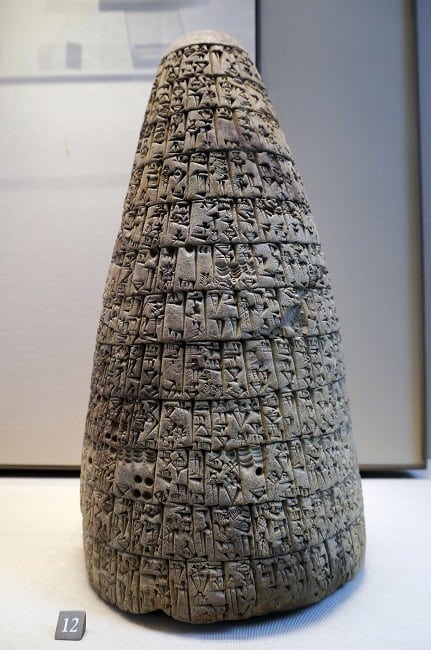 photo source: Wikimedia Commons
photo source: Wikimedia Commons
The Reforms of Urukagina are considered the oldest legal code or “Bill of Rights” in recorded history. Urukagina was a Sumerian king who ruled the city of Lagash and was interested in improving the lives of his people.
The Reforms are written on two large cones; the first one describes the conditions in Lagash at the time and the second annouces Urukagina’s reforms.
One of the most important reforms that Urukagina made was to combat corruption throughout Lagash. Urukagina dismissed corrupt officials, including the chief boatmen, head herdsmen, and fishery inspectors who had illegally seized property. He also got rid of any priests who had taken bribes and any other officials that used tax revenue for personal gain.
In addition to getting rid of corrupt leaders, Urukagina ended debt-slavery and provided charity to the poor and elderly — he claimed that all of his actions were directed by the gods.
5. Instructions of Shuruppak
Year Written: c.2600 BCE
Location: Temple library of Nippur (modern-day Nuffar, Iraq)
Writing System: Cuneiform
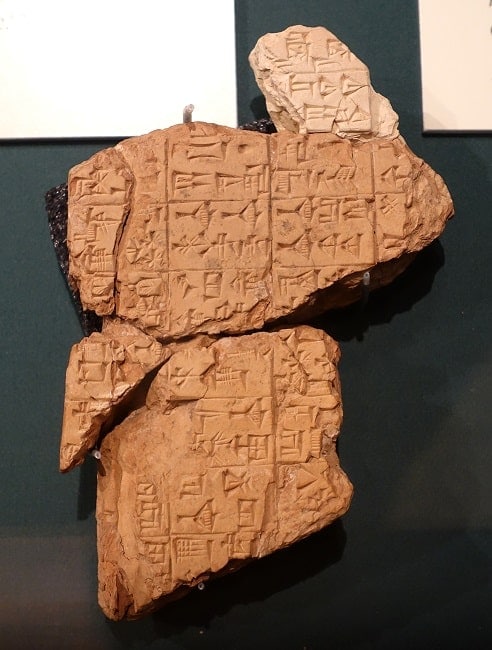 photo source: Wikimedia Commons
photo source: Wikimedia Commons
Instructions of Shuruppak was one of many Sumerian tablets found at the Temple library of Nippur (modern-day Iraq). The tablet, which contains Sumerian wisdom literature, is one of the oldest known pieces of literature in the world — it has been dated to around 2600 BCE.
The text of Instructions of Shuruppak contains advice from a man named Shuruppak to his son, the Sumerian flood hero Ziusudra. The tablet has been completely translated and offers some sage advice such as: never buy a donkey that brays too much, never stick around to watch a fight or let yourself get into a fight, and never curse too strongly or it will rebound on to you.
4. Kesh Temple Hymn
Year Written: c.2600 BCE
Location: Temple library of Nippur (modern-day Nuffar, Iraq)
Writing System: Cuneiform
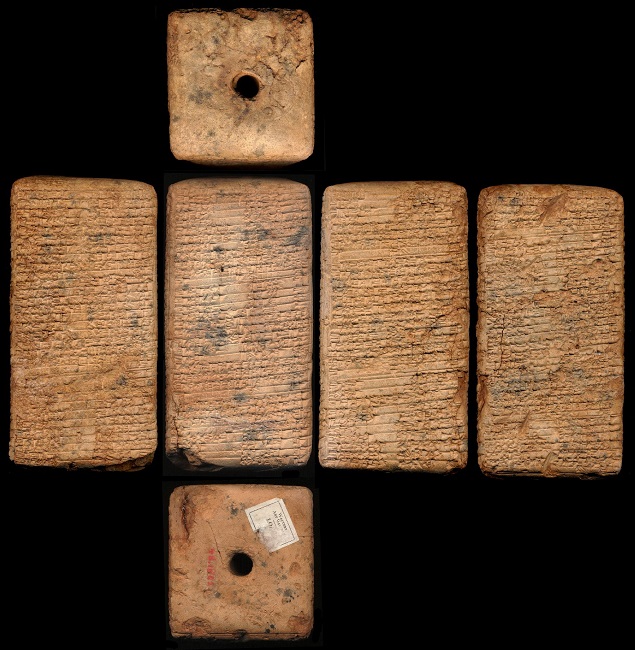 photo source: Wikimedia Commons
photo source: Wikimedia Commons
The Kesh Temple Hymn (or Liturgy to Nintud) along with the tablet known as the Instructions of Shuruppak, are considered the oldest existing pieces of literature in the world. The tablets were found at the Temple of Nippur in modern-day Iraq and come from the ancient Sumerian civilization.
While other copies of the Kesh Temple Hymn have shown up, the oldest tablets date back to around 2600 BCE — scribes copied the hymn faithfully, showing that it was important to the Sumerians.
The Kesh Temple Hymn has been translated and contains about 134 lines, divided into eight songs referred to as “houses” or “temples.” The hymn praises the city of Kesh because its temple was chosen gathering place for the Sumerian gods.
3. Proto-Elamite Tablets
Year Written: c.3200 – 2900 BCE
Location: Susa (modern-day southwestern Iran)
Writing System: Proto-Elamite
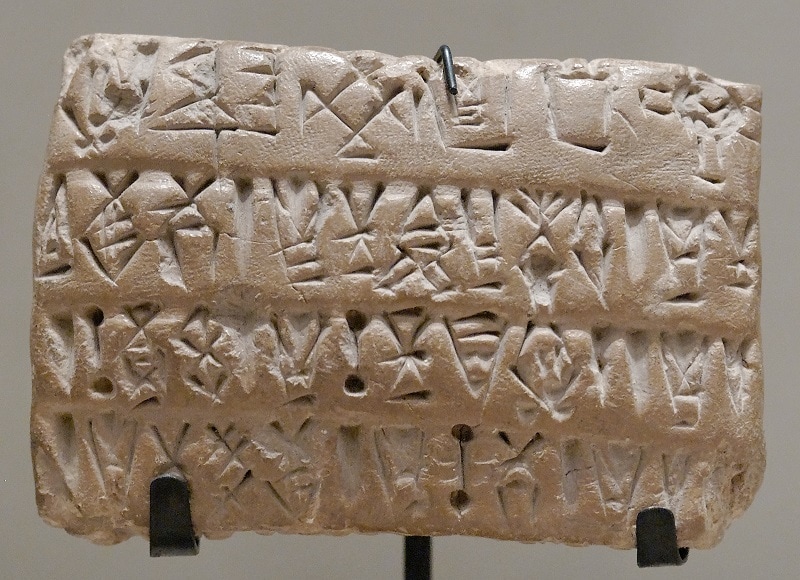 photo source: Wikimedia Commons
photo source: Wikimedia Commons
Proto-Elamite is the last un-deciphered writing system from the Ancient Near East. Despite having more than 1600 tablets and fragments to study, researchers have been unable to figure out how the Proto-Elamite writing system worked and at this time, they still cannot read the tablets. The Proto-Elamite tablets have been dated to around 3000BCE and come from the ancient city of Susa in what is now southwestern Iran.
In 2013, a team from the Ashmolean Museum in Oxford took high quality images of the Proto-Elamite tablets using Reflectance Imaging Technology (RTI). The new and better images are being used to correct earlier research and aid the work being conducted to decipher the language of the texts.
2. Narmer Palette
Year Written: c.3200 – 3000 BCE
Location: Temple of Horus, Nekhen (modern-day Aswan Governate), Egypt
Writing System: Egyptian hieroglyphs
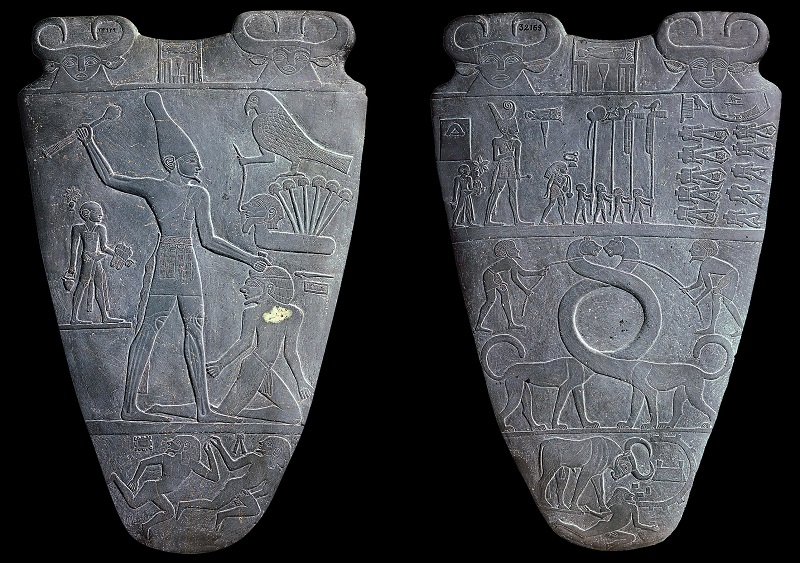 photo source: Wikimedia Commons
photo source: Wikimedia Commons
The Narmer Palette is one of the greatest Egyptian archaeological finds ever. The tablet is completely intact and contains some of the oldest hieroglyphs ever discovered and dates back to between 3200 – 3000 BCE.
Both sides of the Narmer Palette are decorated with hieroglyphs that help to identify Menes, the “almost legendary” first king of the Egyptian empire — many researchers believe that Narmer was another name for Menes as the palette names Narmer as the unifier of Egypt.
The Narmer Palette was discovered by British archaeologists Quibell and Green during a dig at the Temple of Horus at the city of Nekhen in 1897-1898. The archaeologists also found Narmer’s mace and another mace fragment inscribed with the name of King Scorpion, who is believed to have been Narmer’s predecessor.
1. Kish Tablet
Year Written: c.3500 BCE
Location: Tell al-Uhaymir, Babil Governorate, Iraq
Writing System: proto-cuneiform
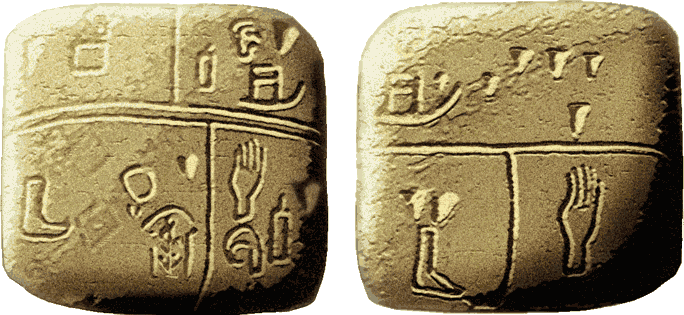 photo source: Wikimedia Commons
photo source: Wikimedia Commons
While there are many claims that older tablets from various places around the world represent the oldest writing, the Kish tablet is widely regarded as the oldest writing in the world that has been confirmed. The tablet was found in Iraq at the site of the ancient Sumerian city of Kish and has been dated to around 3500 BCE.
Although the Kish tablet mostly features pictographs, some of the markings represent the transitional stage between syllabic writing and the first true writing system called cuneiform. Today, the Kish tablet is on display at the Ashmolean Museum of Art and Archaeology at the University of Oxford. The Ashmolean Museum houses one of the largest collections of cuneiform tablets in the world.
OTHER POSTS YOU MAY BE INTERESTED IN











